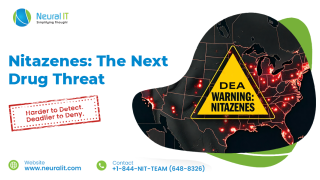Methods Used To Screen Talc For Asbestos Inadequate: Study
Methods Used To Screen Talc For Asbestos Inadequate: Study

Introduction
Last week, an analysis was published in the journal Environmental Health Insights, stating that a lack of regulation and inadequate screening of talc-containing cosmetic products in the U.S. has resulted in asbestos contamination.
The research was carried on a small sample of powder-based cosmetic products, including blush, eye shadow, foundation, and other products. The analysis was done using transmission electron microscopy, which revealed that 3 of 21 powder-based cosmetic products were contaminated with amphibole asbestos. Nearly 15% of products contained asbestos, and out of the three tested products, one is specifically marketed for use by children.
The study aimed to assess asbestos contamination in talc-based products, to draw attention to outdated screening methods, and to raise awareness of the potential hazard in cosmetics. The researchers concluded that the contamination demonstrates the necessity to revise the cosmetics policy and to regulate the screening methods for asbestos.
Exposure to asbestos is linked to several complications, including asbestosis, lung and ovarian cancer, and mesothelioma. The Food and Drug Administration (FDA) requires cosmetic products to be safe, yet there is no specification on how inhalation exposure should be assessed, which has resulted in contamination with small amounts of asbestos.
The lawsuits over talc-based products are growing in numbers, each alleging that the users were exposed to talc and asbestos particles present in the products, which resulted in ovarian cancer and other injuries.
Johnson's Baby Powder, one of the most popular products containing talcum powder, is linked to increasing a woman's risk of ovarian cancer if she uses it regularly in the genital area. In a few cases, the cancer tissue was studied using an electron microscope and was found to have talc in it, which supported the claim that the cancer was caused by the body powder and increases the talc-related cancer risk.
Allegations include that the company knew about the risks of asbestos exposure from the company’s talc-based products causes ovarian cancer or mesothelioma, yet failed to warn the public. Lawsuits also claim J&J hid the fact that talcum powder contains asbestos.
Johnson & Johnson (J&J), the pharmaceutical giant, is currently facing more than 20,000 Baby Powder and Shower-to-Shower lawsuits and has been paying in millions to resolve them. Earlier this year, the company stopped selling its talcum-based products in the U.S. and Canada, claiming declined consumer demand and misinformation about the safety of the products.




